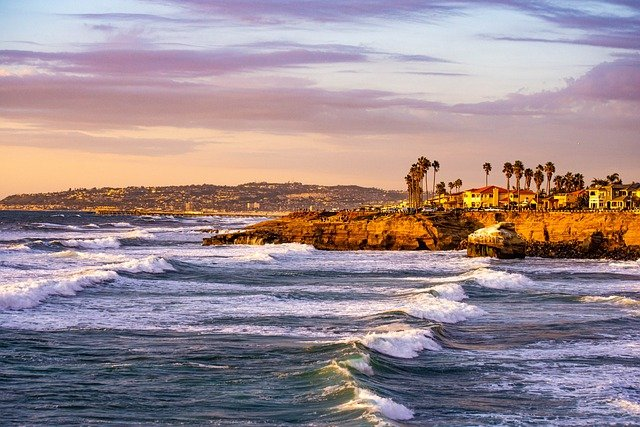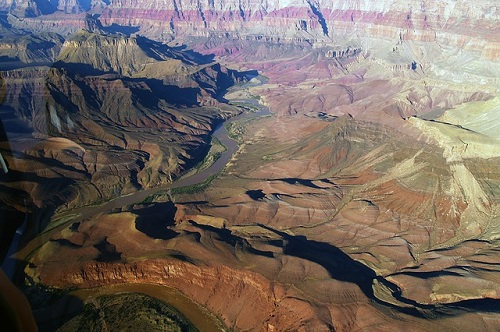One of the most famous and diverse national parks in the United States, people arrive in droves every year to explore Yosemite National Park for themselves.
However, with such an incredible number of attractions spread over a huge area, making sure you see everything is quite a challenge. That is why we decided to create our Yosemite National Park guide to try and help you out.
Using our own knowledge and experiences, we will show you the best bits the park has to offer, from natural beauty spots to historical attractions, to help you plan your dream travel itinerary.
We will even give you tips on the best time to visit, as well as how long to stay for and the easiest way to get there. So, if you plan to visit Yosemite National Park for yourself and want to make the trip as perfect as possible, this is the article for you.
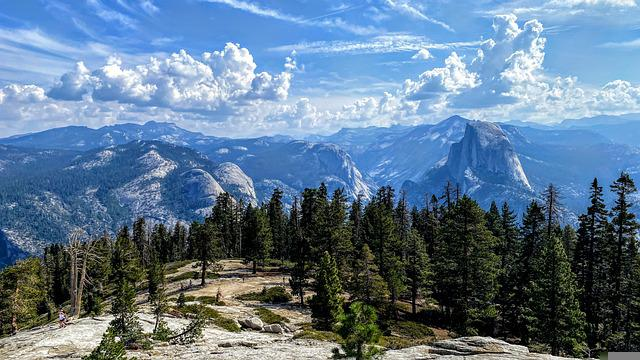
Facts & Figures About Yosemite National Park
Yosemite National Park was established on October the 1st 1890 thanks to efforts by John Muir, a man commonly known as the “Father Of The National Parks”.
This makes it the 3rd oldest national park in the United States and 2nd oldest of the 9 in California, behind Yellowstone and Sequoia, respectively.
At 761,747.5 acres, Yosemite is the 9th largest national park in the lower 48 states and 16th largest in the United States overall. Its 3.3 million annual visitors also make it the 8th most visited national park in the nation.
One of the park’s most iconic features, Yosemite Falls, stands at 2,425 feet (739 metres), making it the highest waterfall in North America. Meanwhile, the 1,612 foot (491 metre) Ribbon Falls has the highest single vertical drop on the continent.
Yosemite National Park Temperature
The Yosemite National Park Temperature usually ranges between a low of 27.8°F (-2.3°C) and a high of 89.2°F (31.8°C). The highest temperature ever recorded in the park is 112°F (44°C) and the lowest is -7°F (-22°C).
The highest temperatures in the park occur from late June to mid-September and the coldest stretch is from late November to early March.
The park experiences heavy precipitation from late October to the end of May, with most of this being snow from the start of November to the end of March.
How To Get To Yosemite National Park
The closest airport to Yosemite National Park is Fresno Yosemite International Airport. The two are 62 miles (100 kilometres) apart and take roughly 80 minutes to drive between. They are directly connected by California State Route 41.
For international travellers and those visiting from a destination not served by Fresno Yosemite International Airport, the closest major international airport is San Francisco International Airport.
This is 170 miles (270 kilometres) from the park and takes 3 and ¼ hours to reach by car.
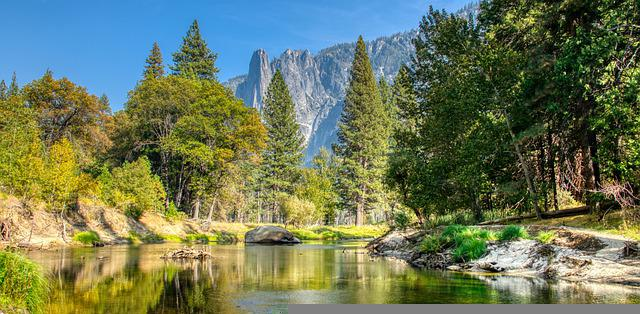
The Wildlife & Landscape Of Yosemite National Park
Yosemite National Park its well known for its landscape which includes some of the most iconic rock formations and mountains in the Sierra Nevada range.
These then dip into beautiful valleys filled with canyons, groves of old growth trees, forests, meadows, glaciers, lakes, rivers, and waterfalls.
The plant species on offer in the park is extensive. Trees including cedar, fir, hemlock, oak, pine, and sequoia fill the forests, while hundreds of different plants like thistles, chapparal, Klamath weed, and a variety of different berries help to create the park’s unique aesthetic.
The range of wildlife on offer is also similarly expansive. Bats, bears, beavers, bighorn sheep, bobcats, cougars, coyotes, fishers, foxes, jackrabbits, lizards, marmots, mule deer, otters, pikas, racoons, skinks, skunks, snakes, squirrels, and toads all call the park home.
That’s all without even mentioning its huge range of fish and over 260 species of birds, which includes creepers, goshawks, finches, flycatchers, jays, nutcrackers, owls, thrushes, and woodpeckers.
Best Time To Visit Yosemite National Park
The best time to visit Yosemite National Park is between late May and mid-August. This is the driest, warmest stretch of the year in the park, so gives you the opportunity to see all of the attractions in the best conditions, without constantly worrying about the weather.
Late May to mid-August also avoids the height of California wildfire season, which tends to peak from late August to mid-October. This provides the added comfort of knowing your dream vacation is unlikely to be impacted or derailed by a natural disaster.
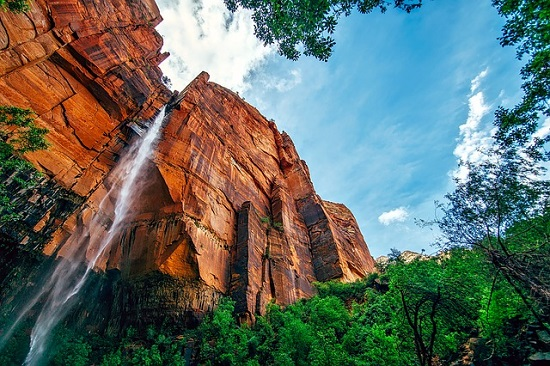
Top Attractions In Yosemite National Park
With its vast size and the incredible number of things Yosemite National Park has to offer, you could spend weeks exploring it and still not see everything. Unfortunately, most people don’t have the time to do that, even if they wanted to.
That is why we will now take you through what we consider to be the top attractions in Yosemite National Park, to ensure you don’t miss any of the highlights and can plan the perfect travel itinerary for your visit.
Explore Yosemite Valley
Yosemite Valley is the tourism hub and most built up section of Yosemite National Park. The site of the park’s main visitor centre, it is the perfect place to get the lay of the land and get your trip started.
Attractions like the Yosemite Museum and Ansel Adams Gallery will help you to learn about the art, culture, and history of the region, while the Yosemite Valley Chapel, the oldest building in the valley, gives you the opportunity to experience it first-hand.
You then have the Nature Center At Happy Isles, Yosemite Conservation Heritage Center, and Yosemite Visitor Center And Theater. These teach you about the park’s wildlife and let you see what steps are being taken to preserve it and the surrounding landscape for future generations.
There is even the setting off points for some of the most popular hiking trails in the park. This includes the Lower Yosemite Falls Trailhead, Mirror Lake Trailhead, Mist Trail & John Muir Trail Trailhead, and Yosemite Valley Trailhead.
Throw in attractions like Berg Bridge, Columbia Rock, Curry Village Ice Rink, the Lower Yosemite Fall Vista Point, a collection of campgrounds, hotels, and picnic areas, and even a souvenir store, and there may not be anywhere in Yosemite National Park with so much on offer in such a small area.
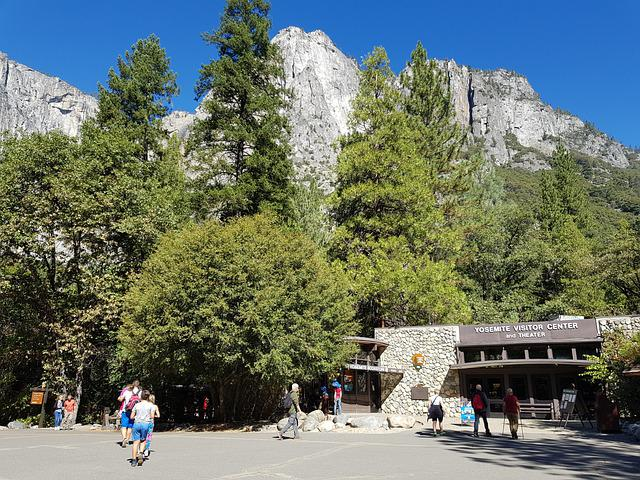
Take A Ride On The Yosemite Mountain Sugar Pine Railroad
The Yosemite Mountain Sugar Pine Railroad is a fantastic attraction that gives visitors the chance to ride on one of two traditional steam locomotives around a stretch of historic narrow gauge track.
Originally opened in 1874, the railroad was at the heart of the region’s booming logging industry. Guests can take a relaxing journey off into the wilderness, soaking in the wildlife and learning more about the history of the industry and region.
You even get to stop at the halfway point and take a stroll around a secluded part of Yosemite that cannot be reached on foot.
With attractions like gold panning, a remote picnic site, a historic narrow gauge snowplow, the Thornberry Museum, and the Sugar Pine Trading Company store, this is easily one of the most memorable and unique experiences in the entire park.

Embrace The Past At The Yosemite History Center
Found in the Wawona region of the park, the Yosemite History Center is a preserved pioneer village.
It features historic buildings from around the park that have been moved here and filled with historic artefacts to give visitors the chance to see how people in the region would have historically lived.
With an artist’s studio, bakery, bank, blacksmith’s shop, cavalry office, powder house and jail, ranger patrol cabin, transport office, homestead cabins and houses, and acting superintendent’s headquarters, it lets you see every aspect of pioneer life first hand.
Listed on the United States National Register Of Historic Places, there is even the Wawona Covered Bridge, Wawona Hotel, Wawona Visitor Center, a general store and gift store, and a corral filled with beautiful horses.
This all combines to make the Yosemite History Center a place worth visiting for everyone.
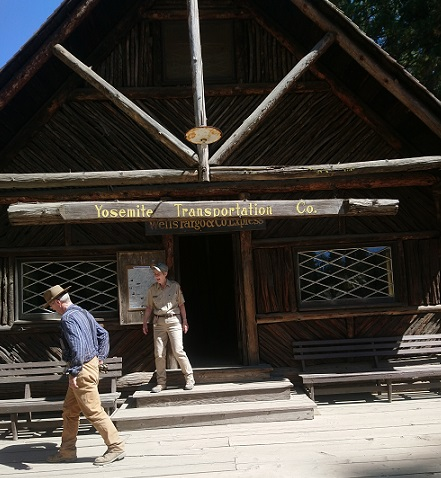
Snap A Photo At Tunnel View
Tunnel View is a scenic overlook that is perhaps the most stunning in the entire park. In a single panoramic view, you can witness a number of the most iconic landmarks in Yosemite National Park, such as the El Capitan and Half Dome rock formations and Bridalveil Fall.
One of the first sights that greets visitors who enter the park from the south entrance, it perfectly sets the stage for the upcoming expedition. Meanwhile, for photographers, it is the ideal opportunity to snap what may be the best photo you take throughout your stay.
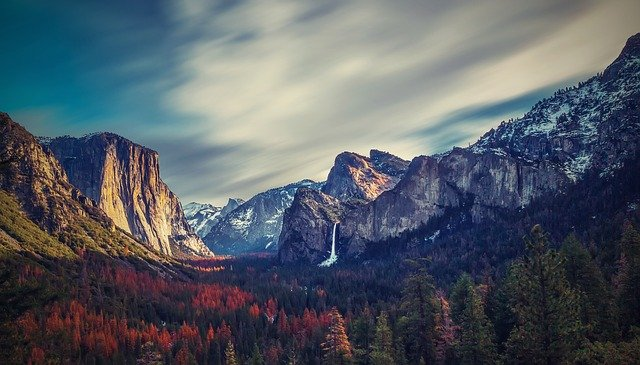
See Some Of The Park’s Legendary Waterfalls
One of the most famous attractions throughout Yosemite National Park is its incredible collection of waterfalls. In total, the park boasts a whopping 26 waterfalls, ranging between 25 feet (7.6 metres) and 2,425 (739 metres) in height.
You have seasonal ephemeral falls (Ribbon Fall), falls that glow in the colours of rainbows and fires (Horsetail Fall), falls you can climb, and every other variety you could imagine, many of which are among the tallest in North America.
Whether you are a fan of waterfalls, love unique natural beauty spots, or are simply seeking to snap the perfect photo, the Yosemite waterfalls are an attraction well worth your time exploring.
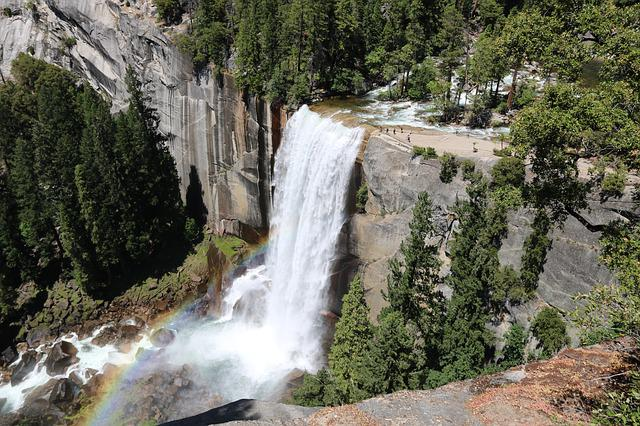
Go Hiking In Mariposa Grove Of Giant Sequoias
Just a short way south of Wawona, the Mariposa Grove Of Giant Sequoias features hundreds of the iconic tree species and is the largest such grove in Yosemite. With two of its trees listed among the 30 largest giant sequoias on Earth, it is the perfect place to appreciate their majesty.
One of the two aforementioned trees is also the oldest in the grove. Affectionately known as “Grizzly Giant”, it is said to be anywhere from 1,900 to 2,400 years old. You’ll also find perfectly preserved fallen trees, trees with tunnels carved through them, and various other unique attractions.
With the entire grove listed on the United States National Register Of Historic Places, it is the perfect place to go for a stroll, be amazed, and take in this incredible aspect of the Yosemite landscape.
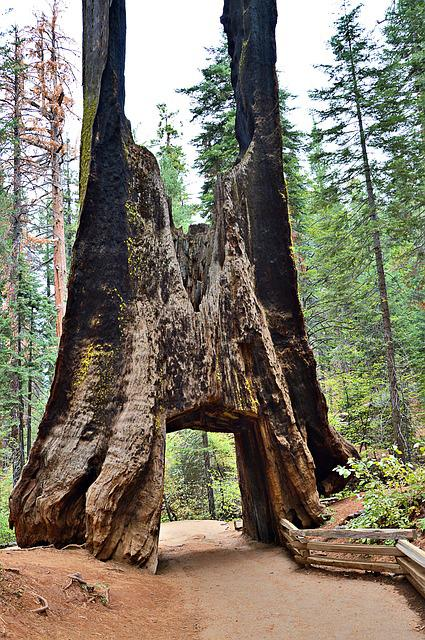
Climb To The Top Of Glacier Point
Glacier Point is a scenic viewpoint on the edge of Yosemite Valley that stands at an elevation of 7,214 feet (2,200 metres). Thanks to a combination of its height and location, many feel it offers one of the most incredible vistas you will find anywhere in Yosemite National Park.
From its peak, you can see a number of the most popular attractions in the park.
These include the Clouds Rest and Half Dome rock formations, Nevada Fall, Vernal Fall, and Yosemite Falls waterfalls, and Yosemite Valley itself. From 1872 to 1968 it was also the site of the legendary Yosemite Firefall.
Reachable by both road and trail, whether you want to drive or hike you can make your way to this stunning location and relax, take in the breathtaking views, and snap some of the most iconic photos you ever take.
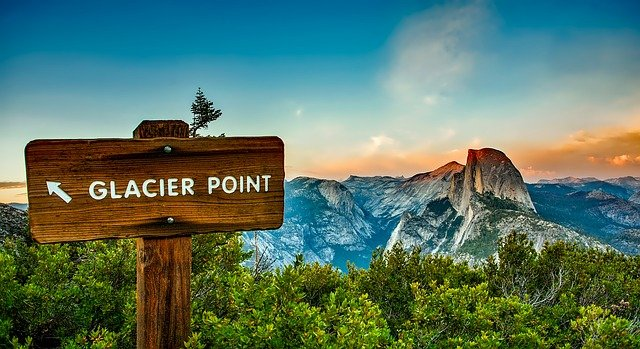
Things To See And Do Near Yosemite National Park
While Yosemite National Park is filled with great sights and sounds, there are a number of wonderful attractions in the surrounding area as well.
With that in mind, we will now look at the best things to see and do near Yosemite National Park, to ensure you can truly make the most of your visit.
Sierra National Forest
Sierra National Forest is Yosemite National Park’s immediate neighbour to the south. Covering 1.3 million acres, it is an extremely popular destination for activities like camping, hiking, fishing, nature watching, boating, climbing, and even skiing in the winter.
With its trails, old growth trees, mountains, lakes, views, and wilderness areas, all of which draw far fewer visitors than Yosemite, Sierra National Forest is the perfect place to enjoy the landscape of the Sierra Nevada Mountains in a serene and relaxing fashion.
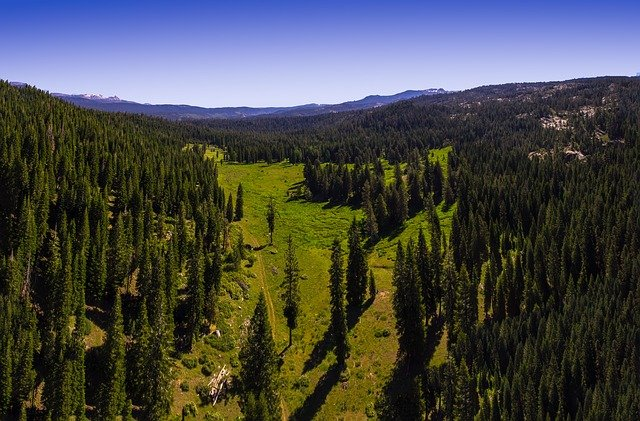
Kings Canyon National Park
The most recently designated national park in the area, having been established in March 1940, much of the northern section of the park features similar landscapes to those we have already seen.
However, what sets Kings Canyon apart is the collection of canyons, rivers, caves, and lakes that it boasts. Perhaps most notably is Kings Canyon itself, an 8,000 foot deep canyon that ranks among the deepest gorges in the country.
Other top attractions in the park include the General Grant Tree, the world’s second-largest giant Sequoia and, unofficially, the “Nation’s Christmas Tree”, as well as an abundance of wildlife like bears, bighorn sheep, marmots, and more than 200 types of birds.
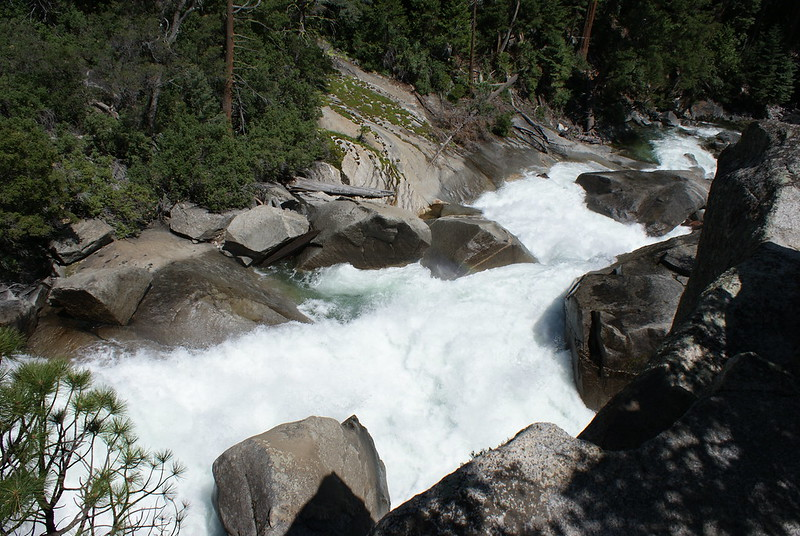
Sequoia National Park
Established on September 25th, 1890, 6 days earlier than Yosemite National Park, Sequoia National Park is the second oldest national park in the nation. It is also the smallest and southernmost of the group of national parks known as the Majestic Mountain Loop.
Located immediately to the south of Kings Canyon National Park, it and Sequoia National Park are the only two national parks you can internally drive between in the country. As its name suggests, the park is best known for its old growth giant sequoia forests.
Boasting countless hiking trails, rugged mountains, scenic overlooks offering stunning views, and an array of wildlife like bighorn sheep, foxes, deer, bears, and over 200 species of birds, it is among the most beautiful forests in the nation.
Perhaps its most iconic attraction is the General Sherman tree, the largest living tree by volume on the planet.
However, with Mount Whitney, the highest point in the lower 48 states, Moro Rock, the Log Tunnel, Crystal Cave, and the General’s Highway, there is plenty for everyone to see and do.
Read our Sequoia National Park guide here.
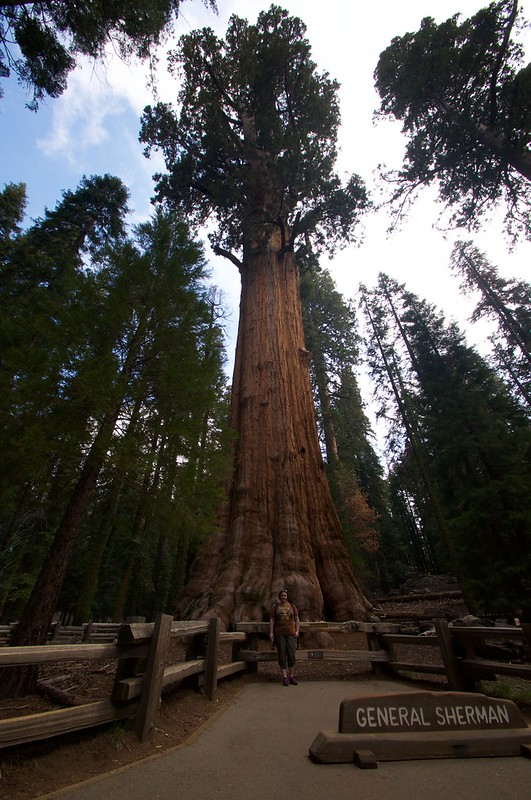
Best Place To Stay Near Yosemite National Park – Evergreen Lodge At Yosemite
Evergreen Lodge At Yosemite is a stunning, rustic lodge and cabins, surrounded by forests and stunning vistas. It is ideal to help you totally immerse yourself in your surroundings for the duration of your stay.
Throughout the property, you will find amenities like a bar, restaurant, mini mart, outdoor hot tub and pool, children’s playground, and a games room offering billiards, board games, and table tennis. This ensures you have plenty of ways to have fun while you soak in your surroundings.
The rooms are all extremely spacious and include a private bathroom, well equipped seating area, tea and coffee making facilities, comfortable furniture, bedding, and linens, and a range of free toiletries. Packed lunches will also be prepared for all guests on request.

How Many Days To Spend In Yosemite National Park
Most people will want to spend 3 full days in Yosemite National Park.
This will give you one day to spend exploring Yosemite Valley, another to do drives to some of the scenic overlooks and take some short hikes, and a third to dedicate to a longer hike into the more remote parts of the park.
Those who don’t have quite so much time will also be able to have an incredible experience with a 2 day trip. You can spend half a day in Yosemite Valley and half a day driving, then spend your second day doing your hikes.
Any less than 2 days and you will only be able to get a taste of what is on offer and may have to rush through the attractions. That said, if a day is all you can spare, it is still well worth the trip.
If you can spend more than 3 days though, there’s plenty to keep you busy on a longer visit.
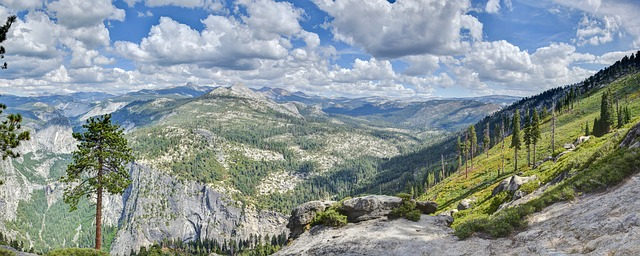
Conclusion
Yosemite National Park is one of the most popular national parks in the United States for a reason. With its vast number of natural beauty spots, copious historical locations, and wonderful, exciting attractions, there is plenty to offer all types of visitors an enjoyable trip.
Our guide will hopefully have given you plenty of ideas and information to allow you to plan the perfect travel itinerary. From what to see and when to go to the best way to get there and how long to stay for, you should now have all you need.
That mean’s all that’s left is to start getting things booked, so you can look forward to experiencing the park for yourself in the very near future.
